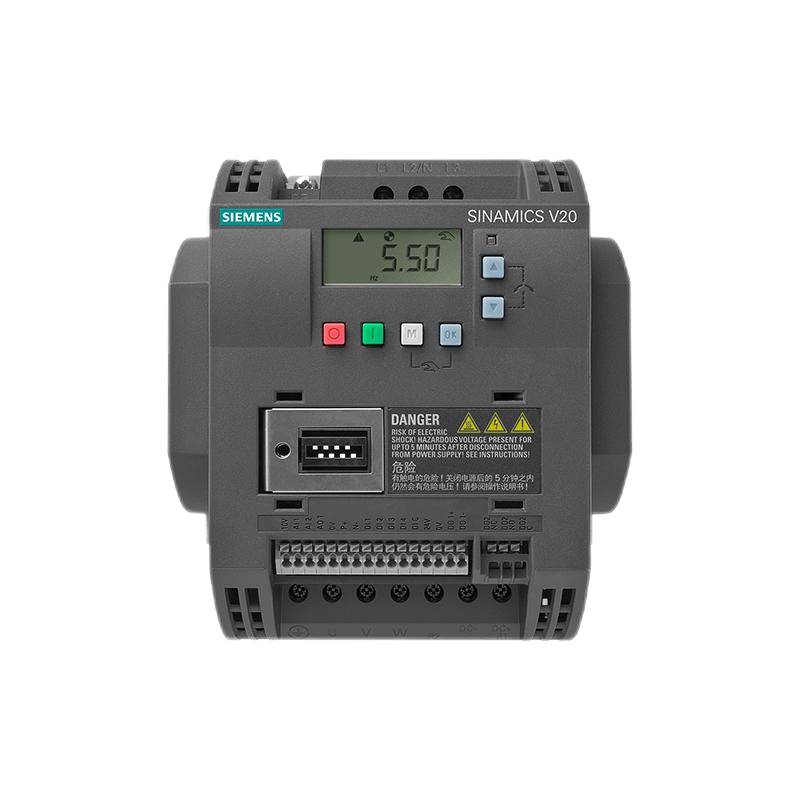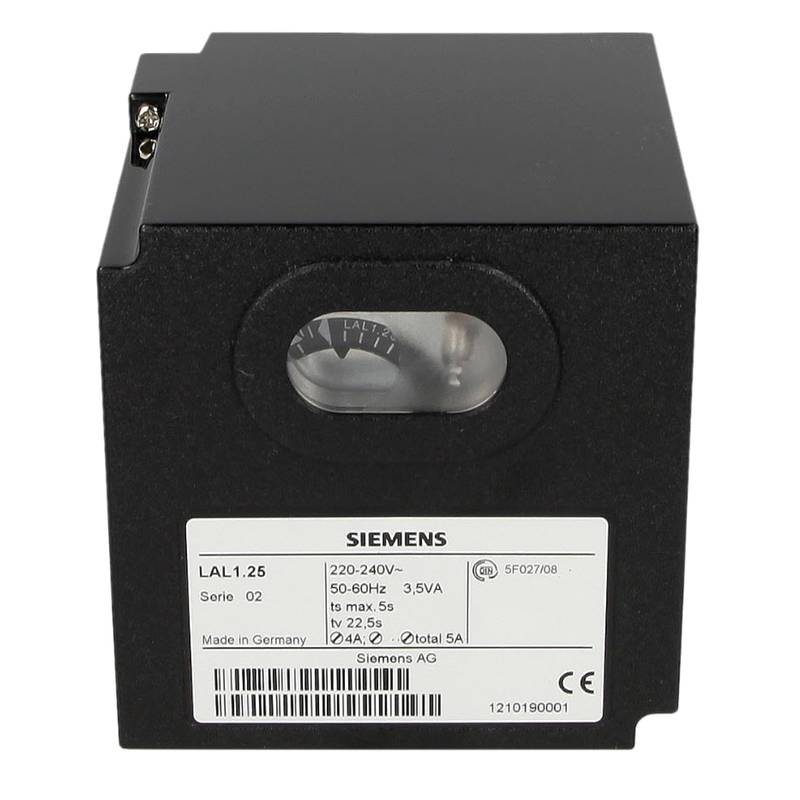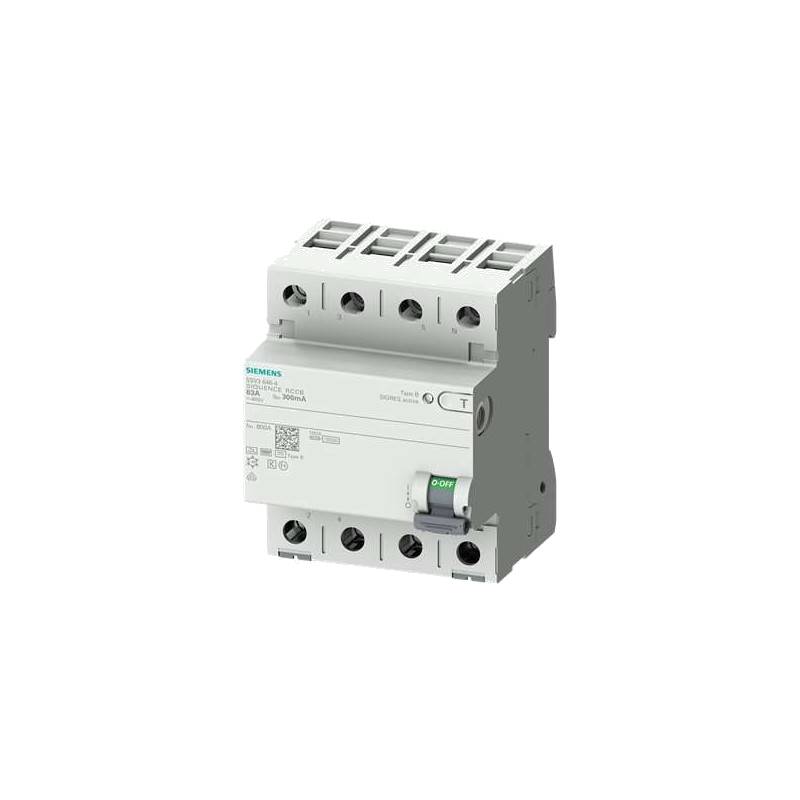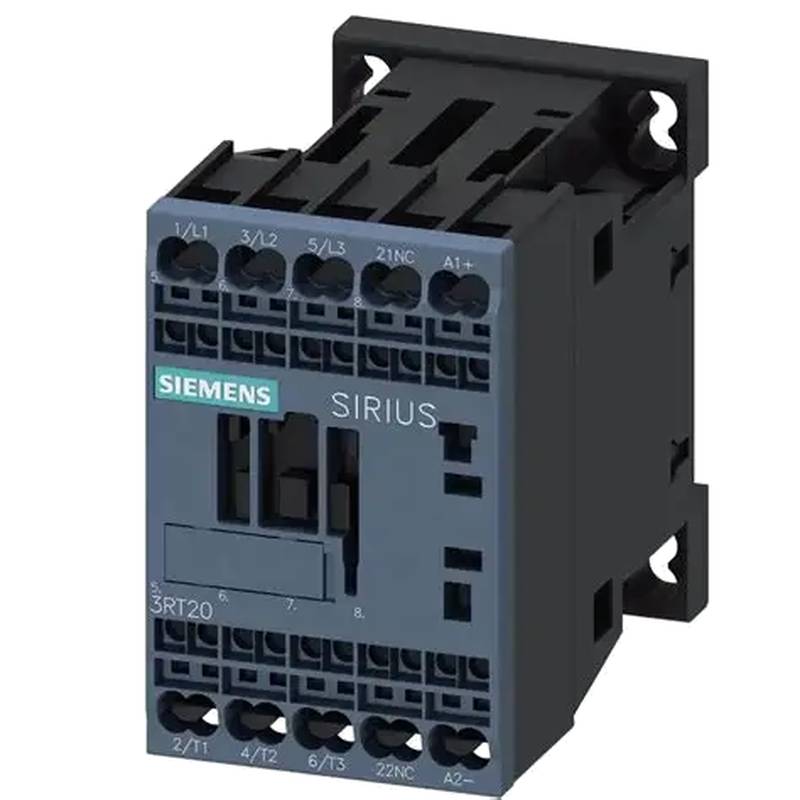
The Siemens 5SY6204-7CC Miniature Circuit Breaker (MCB) stands as a robust solution for reliable overcurrent protection in demanding industrial environments. This 2-pole, 4-ampere device offers exceptional tripping characteristics and compliance with stringent international standards, ensuring the safety and operational continuity of electrical installations. Its compact design and advanced arc-quenching technology make it a preferred choice for a wide range of applications where space and performance are critical. Key advantages include its high breaking capacity, precise current limitation, and durable construction, all contributing to reduced downtime and enhanced system reliability.
Product Specifications
| Feature | Specification |
| :---------------------- | :---------------------------------------------- |
| Product Type | Miniature Circuit Breaker (MCB) |
| Manufacturer | Siemens |
| Model Number | 5SY6204-7CC |
| Number of Poles | 2 |
| Rated Current (In) | 4 A |
| Rated Voltage (Ue) | 230/400 V AC |
| Tripping Characteristic | C Curve (for inductive loads) |
| Breaking Capacity (Icn) | 6 kA |
| Frequency | 50/60 Hz |
| Terminal Type | Screw Terminal |
| Mounting Type | DIN Rail (35mm) |
| Operating Temperature | -25 to +45 °C |
| Protection Class | IP20 |
| Compliance Standards | IEC/EN 60898-1, IEC/EN 60947-2 |
Core Features & Market Positioning
The Siemens 5SY6204-7CC distinguishes itself through its C-curve tripping characteristic, specifically designed to handle inrush currents common in inductive loads such as motors and transformers. This feature prevents nuisance tripping, a critical advantage in industrial automation and machinery control systems. With a robust breaking capacity of 6 kA, it provides substantial protection against short circuits, safeguarding downstream equipment and personnel. Siemens' reputation for quality and reliability in the electrical component market further solidifies the 5SY6204-7CC's position as a dependable choice for engineers and system integrators seeking proven performance and longevity in their protective devices.
Key Application Scenarios
This 2-pole, 4A MCB finds its primary utility in protecting individual circuits within industrial control panels, power distribution boards, and machinery. It is ideally suited for safeguarding smaller motor loads, lighting circuits, and control circuitry where a C-curve response is necessary to accommodate transient current demands. Typical applications include protecting pumps, fans, conveyors, and auxiliary equipment in manufacturing plants, process industries, and building automation systems. Its suitability for 230/400V AC systems makes it versatile for single-phase and three-phase distribution networks, offering precise overcurrent and short-circuit protection.
Practical System Integration Guidance
Integrating the Siemens 5SY6204-7CC into existing electrical systems is straightforward due to its standard 35mm DIN rail mounting and familiar terminal configurations. Ensure that the ambient temperature is within the specified operating range of -25 to +45 °C for optimal performance. When wiring, connect the line conductors to the upper terminals and the load conductors to the lower terminals, observing correct polarity. The breaker's double-pole design allows for simultaneous disconnection of both live conductors in a single-phase circuit or two live conductors in a three-phase system, enhancing safety during maintenance. For multi-pole applications, it's advisable to use appropriate ganging devices to ensure coordinated tripping.
Operation and Risk Mitigation
The primary function of the Siemens 5SY6204-7CC is to automatically interrupt electrical circuits when an overcurrent (overload or short circuit) condition occurs, thereby preventing damage to wiring and equipment, and mitigating fire hazards. Users can manually reset the breaker after the fault condition has been cleared. Should the breaker trip repeatedly, it indicates a persistent fault within the protected circuit; investigation into the cause, such as an overloaded device or a short circuit, is paramount. Always ensure power is de-energized before attempting any inspection or resetting procedures to avoid electrical shock hazards. Adherence to local electrical codes and standards during installation and operation is crucial for safety.
Scalability & Long-Term Value
The Siemens 5SY6204-7CC integrates seamlessly with other components within the broad Siemens SENTRON protection device portfolio, allowing for easy expansion and modification of electrical distribution systems. Its compatibility with standard DIN rail mounting systems ensures it can be retrofitted into existing panels or incorporated into new designs without specialized hardware. For facilities embracing Industry 4.0 principles, while this specific MCB is a foundational protective element, it can be part of a larger system that includes intelligent power monitoring modules or communication-enabled switchgear, contributing to overall system intelligence and predictive maintenance strategies.
FAQs
What is the tripping characteristic of the Siemens 5SY6204-7CC?
The Siemens 5SY6204-7CC features a "C" curve tripping characteristic. This design is optimized for inductive loads that experience higher inrush currents upon activation. It provides a delay before tripping, preventing nuisance shutdowns from temporary surges.
What applications are best suited for a C-curve breaker like the 5SY6204-7CC?
This type of breaker is ideal for circuits with inductive loads, such as motors, transformers, and solenoid coils. These components draw significantly more current when initially powered on. The C-curve ensures reliable operation by tolerating these brief overcurrents.
Can the 5SY6204-7CC be used for resistive loads like heaters?
While it can protect resistive loads, a "B" curve breaker is typically recommended for purely resistive circuits. The C-curve's delay might be unnecessary and could slightly prolong response to certain fault conditions in strictly resistive applications.
What is the breaking capacity of the Siemens 5SY6204-7CC?
The breaking capacity, denoted as Icn, for the 5SY6204-7CC is 6 kA. This indicates the maximum fault current the breaker can safely interrupt without sustaining damage. This level is suitable for many standard industrial and commercial distribution systems.
Is 6 kA sufficient for typical industrial settings?
For many sub-distribution panels and circuits within industrial facilities, 6 kA is adequate. However, in areas with higher prospective fault currents, such as near main transformers, higher breaking capacity breakers (e.g., 10 kA or 16 kA) might be required.
How does breaking capacity affect safety?
A higher breaking capacity ensures the breaker can safely extinguish the electrical arc generated during a short circuit. If the breaker's capacity is exceeded, it may fail to interrupt the fault, leading to extensive damage, fire, or injury.
What does "2P" signify for the Siemens 5SY6204-7CC?
"2P" stands for "2-pole," meaning the circuit breaker is designed to interrupt both live conductors of a single-phase AC circuit simultaneously. This enhances safety by completely isolating the circuit from the power source.
When should a 2-pole breaker be used instead of a single-pole breaker?
A 2-pole breaker is essential for circuits where both conductors must be disconnected for safety, such as in 230V single-phase systems or when protecting equipment that requires complete isolation. It ensures neutral and line are broken together.
Can the 5SY6204-7CC be used in DC circuits?
The Siemens 5SY6204-7CC is specifically designed and rated for AC (Alternating Current) circuits. It is not suitable for use in DC (Direct Current) circuits, as DC arcs behave differently and require specialized DC breakers for safe interruption.
Are there specific wiring guidelines for 2-pole breakers?
Yes, when wiring a 2-pole breaker, ensure both poles are correctly connected to the incoming line and outgoing load conductors. Proper polarity and secure terminal connections are vital for safe and effective operation.
How do I reset a tripped 5SY6204-7CC?
To reset a tripped 5SY6204-7CC, first identify and rectify the cause of the overcurrent. Then, firmly push the operating lever upwards to its "ON" position. If it trips again immediately, there is still a fault present.
What could cause the 5SY6204-7CC to trip frequently?
Frequent tripping typically indicates an overload condition where the circuit is drawing more current than the breaker's rating, or a persistent short circuit somewhere in the connected load or wiring. It can also sometimes indicate a faulty breaker.
What is the rated current of this breaker?
The rated current (In) for the Siemens 5SY6204-7CC is 4 Amperes (A). This is the maximum continuous current the breaker can carry without tripping under normal operating conditions.
Is 4A suitable for motor protection?
4A is suitable for protecting small motors or specific circuits within larger motor control systems. For larger motors, a higher rated current breaker with appropriate overload protection settings would be necessary.
How does the rated current impact system design?
The rated current determines the maximum load the circuit can safely handle. Selecting the correct rated current is crucial to prevent nuisance tripping during normal operation while ensuring adequate protection against overloads.

























